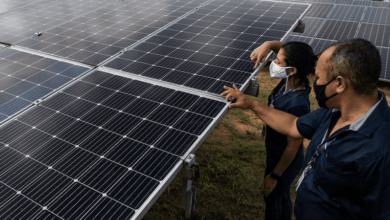India’s Population Projected to Reach 152.2 Crore by 2036: Government Report

News Mania Desk/Agnibeena Ghosh/13th August 2024
India’s population is expected to reach a staggering 152.2 crore by the year 2036, according to a recent report by the Ministry of Statistics & Programme Implementation titled ‘Women and Men in India 2023’. This projection marks a significant increase from the population recorded during the last national census in February 2011, when India was home to 121.08 crore people.
The ‘Women and Men in India 2023’ report is a comprehensive document that provides an in-depth analysis of the demographic and social trends in the country. It offers valuable insights into the state of men and women in India, highlighting the disparities that exist between different groups. By presenting disaggregated data, the report allows policymakers and researchers to better understand the nuances of these disparities, thereby helping to address them more effectively.
One of the key findings of the report is the slight shift in the gender composition of India’s population. In 2036, women are expected to make up 48.8% of the population, a modest increase from the 48.5% recorded in 2011. This change is also reflected in the projected sex ratio, which is expected to rise from 943 females per 1,000 males in 2011 to 952 females per 1,000 males in 2036.
The report also sheds light on the changing age structure of India’s population. By 2036, the proportion of individuals under the age of 15 is expected to decrease, a trend that can be attributed to declining fertility rates. On the other hand, the proportion of those aged 60 and above is projected to increase significantly. This shift in age demographics indicates a gradual aging of the population, which could have far-reaching implications for the country’s social and economic policies.
In a related context, the United Nations had noted in April of the previous year that China was on the verge of losing its status as the world’s most populous country, a title it had held for decades. The UN projected that by the end of that month, India’s population would surpass that of mainland China, reaching 1,425,775,850 people.
Further emphasizing this demographic shift, the UN’s ‘World Population Prospects 2024’ report predicted that India’s population would peak in the early 2060s at around 1.7 billion (170 crore). However, the report also indicated that after reaching this peak, India’s population would begin to decline by approximately 12% by the end of the century. Despite this eventual decline, India is expected to remain the world’s most populous country throughout the century, surpassing other nations in sheer numbers.
These projections underscore the immense demographic changes that India is set to experience over the coming decades. The anticipated population growth presents both opportunities and challenges for the country. While a larger population can drive economic growth and innovation, it also raises concerns about resource management, social infrastructure, and environmental sustainability.
As India moves towards this demographic milestone, it will be crucial for policymakers to plan strategically to ensure that the nation can harness the potential of its population while addressing the challenges that come with such rapid growth.






